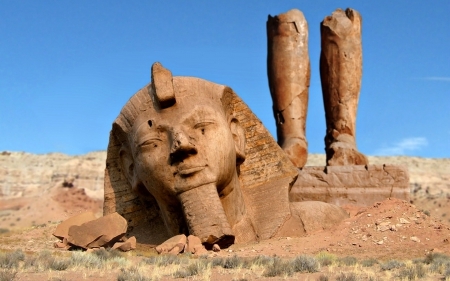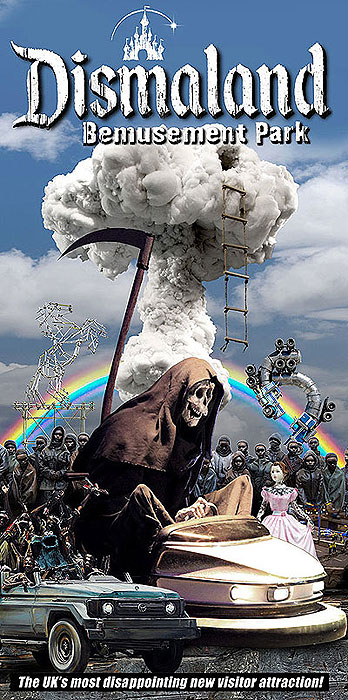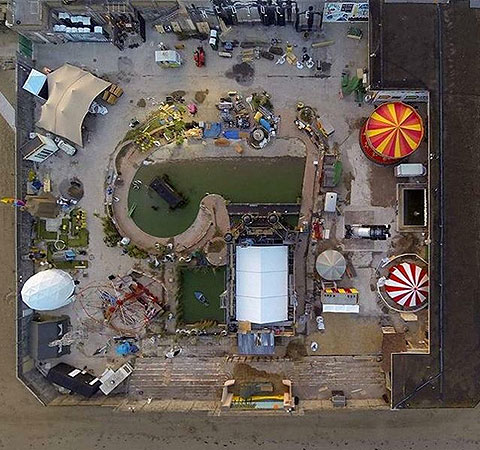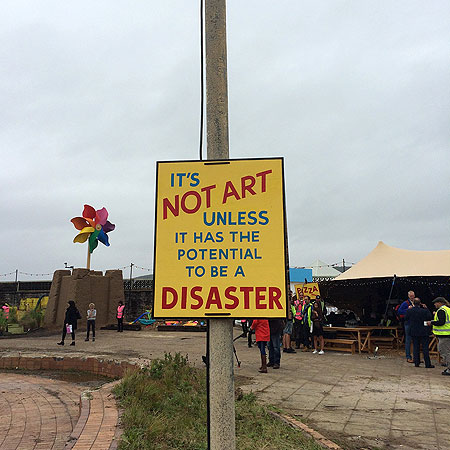what once was, is no more
As I type this, I am waiting for tomorrow's series premiere of Fear the Walking Dead, the pre-quel to AMC's The Walking Dead (based, more or less, on Kirkman and Moore's Image comic series).
Post-apocalyptic fiction (at least post-civilization fiction) is much older than works like Richard Matheson's I am Legend. Daniel Defoe's Journal of the Plague Year, from the 1700's, might fit loosely in this category, and most major empires that have fallen (Persia, Greece, Rome, etc.) have been survived by accounts of the declining years, where governments and social structures unravel and the monstrous "hordes" of invaders sweep over their lands, destroying their accomplishments like the zombies who will be sweeping over Los Angeles tomorrow night.
There is even an odd little bit of "what once was, is no more" about this lecture because when you read it, the Pilot episode of Fear the Walking Dead will be in the past.
Station Eleven
As civilization falls to another plague in Mandel's 2014 novel, the focus is an unusual one for a post-apocalyptic work. Yes, there is still plenty of the how-do-we-survive element, the human spirit pitted against those who have lost their humanity, the sort of thing that makes Cormac McCarthy's The Road and George Miller's Mad Max: Fury Road exciting.
But here's the difference between the thrill ride of Mad Max and the so-called literary novel (and I will put The Road into theis "literary" bag as well): along with the suspense, plot reversals, shock, violence there are layers of ideas. Not surprisingly, longer works of fiction have more space to offer up more ideas than shorter works of fictions (short stories, lyric poems, one-act plays). For good or ill, this means we can approach Station Eleven from many different angles. Just as the traveling troupe in the novel experiences diverse cultures as the wend their way from one settlement to the next, the reader experiences a diversity of themes, ideas, issues along the way.
For the most part the themes are not new; they have been expressed in various forms of communication (art, music, literature, speech, even math) throughout human history, with the ideas and examples becoming more complex as human history progresses. But the fact that these are human themes is what makes them work; they resonate with readers because they are part of a shared set of experiences. No, I have never had to fight off a zombie (though I do know how; I have read The Zombie Survival Guide, twice); however, haven't most of us had to deal with the occasional thoughtless individual who ignores our interests and tries to chew us up (figuratively)? If zombies (and vampires) are not literal (and I am not saying they are not), they certainly make great symbols.
In addition to finishing the novel this week, you were asked to look at three (and a half?) short works--a story (actually the opening of an episodic novel), two poems, and an optional essay (or book if you chose to read the original source where that essay came from). So we have different genres from different time periods (from the late 16th century to the late 20th century) which all connect to ideas expressed in Station Eleven. Those connections allow for comparison/contrast, and they introduce just a few of the key ideas in the book.
"Ozymandias" and "Not marble nor the gilded monuments"
by Percy Bysshe Shelly and William Shakespeare (respectively)
For no idea I can put my finger on, this poem was once read over images of a desert as the sign-off on a local television station. Most of you are far too young to even know what a sign-off is (stations used to shut down their transmitters during night and early-morning hours, and just before the shut down there was usually a patriotic-themed clip--fighter jets zooming across the sky with the star-spangled banner playing in the background--that sort of thing, before the set displayed a test pattern or went dark), but even through the 1970's they were common, and some parts of the world still shut down their transmitters after mid-night.
Anyway, one night someone (likely a frustrated English major) decided to play this reading of "Ozymandias" for the sign-off, and I took notice, not only because this was weird but because even to a young Me, with aspirations of being a scientist, this was pretty powerful stuff. This cold, sneering image of one of the most powerful kings in history brags, "'My name is Ozymandias, king of kings / Look on my works, ye Mighty, and despair!' / Nothing beside remains" (ll 10-12). This arrogant king, who built an empire and all of its trappings (the architecture, statuary, burial vaults) that would stand as monuments to his greatness forever, puts himself above all other rulers ("ye Mighty"), but he is cheated of his eternal fame by nature. What's left, though, are "Two vast and trunkless legs" (l 2), and "Round the decay / of that colossal wreck, boundless and bare / The lone and level sands stretch far away" (ll 12-14).
To my science mind this sang, "Time and erosion are the great equalizers." No matter how permanent, eternal the works of humans might seem, they are all subject to becoming "Dust in the wind" (Kansas).
The connection to the post-apocalyptic world of Station Eleven is obvious. All of the inventions, technologies, artistry of the world start to decay once the grid fails. Well, not quite all. Yes, the cities are falling to ruin. A single child's tea set seems miraculouslly intact, but, for the most part, the things of the world are dying out. However, Shakespeare survives, though his works.
In Shakespeare's Sonnet 55: "Not marble nor the gilded monuments" he anticipates this from all the way back in the late 1500's (possibly the early 1600's, dates and Shakespeare get iffy).
As Shelly will do a couple hundred years later, Shakespeare bemoans the fact that all of the monuments, the creations of even princes will turn to "unswept stone, besmear'd with sluttish time / When wasteful wars will statues overturn" (ll 4-5). Time/erosion, war, natural disasters all eventually tear down the things humans create. The poem suggests that the lover in the poem, however, will outlive death and will last until the world is worn out to "ending doom" (l 12). Why? Because "this powerful rhyme" (l 2), this poem, endures as it is communicated from generation to generation, from culture to culture. And it has endured.
Shakespeare's Globe Theatre burned to the ground. It was rebuilt but later pulled down by the Puritans (probably in an attempt to grab the land to build slums). It was re-re-built in modern times, but it is not the same theatre, not even quite in the same spot. Shakespeare's Sonnet 55, however, is still intact, over four hundred years after it was written, and it is certainly not the oldest extant work of literature (Antigone, for example, goes back 2600 years).
Unlike an artifact, communication lasts as long as someone is left to read or speak or perform or sketch or film the work and share it with another person.
At the center of the novel is a troupe that does just that--it travels from place to place sharing Shakespeare, classical music, even news with people. The book is filled with sources of information, from tabloids to comic books, the bible to a book of potentially-damning letters, even the reserruction of a home-grown paper that weaves its way through several chapters. Even the makeshift museum only makes sense because there is a curator/docent to give the items context. Without the story about what it was, and how it worked, a "thing" is just that, "a thing." Communication, sharing information, then, is one of the things that holds the remnants of this future civilization together.
"Interface"
from David Sudnow's Pilgrim in the Microworld
This idea that civilization's grow or recur or are built upon earlier civilizations is central to David Sudnow's 1983 work "Interface."
A Berkeley professor, Sudnow can't understand why perfectly-intellegent people would give up interesting conversation for interacton with dots on a television screen. These are the days of Atari 2600, and the latest craze is Missle Command. Eventually, as these stories go, he gets interested, buys a console, plays a little Missle Command, gets good at it, becomes hooked. None of that is the point of his essay.
He recognizes that this recreational fluff through this console is the first real interface between the masses and computers. Prior to that, computers were the stuff of eggheads and science fiction. Here, in a very primitive but practical way, programmers had created something that the average human (children even) could interact with.
And Sudnow dubs the PC (the Commodore 64 had come out the year before Sudnow's book, and the Vic 20 the year before that; people were beginning to buy PCs) "The organically perfect tool." Well, perfect for what?
One of my all-time favorite scientists, Bill Nye the Science Guy, centered an episode of his kids' show around the following statement: "Information can be stored outside the body." Huh? How? What does that even mean? Who cares?" His notion was the same as Sudnow's--progress (for good or ill), human history, civilization occur because humans can store information outside the body. If your teacher shouts, "I HAVE IT! I NOW KNOW THE MEANING OF LIFE, THE UNIVERSE, AND EVERYTHING" and then promptly dies, you are frustrated. You were thaaat close. If that teacher had written it down, his death might be sad, but you would have access to the answer, the information. Writing things down is storing information outside of the body.
So is painting/sketching; so is musical composition; so is mathematics/equations; so is vidoe/audio recording. A paintbrush helps you to paint; a Stratocaster helps you play music; a typewriter helps you write a paper, a slide rule (?) helps you solve an equation, but the computer does it all, and it can store the information in multiple locations (to be found and acted upon), and it can be transmitted almost instantly to multiple listeners/viewers/readers. Comparing this to other sorts of human accomplishment (the Great Pyramid at Giza, for example), the monuments (once we remove the art, writing, math, etc.) are "Just labor" by comparison. They are amazing feats, but they do not affect how people live their lives, learn, grow, change.
One wonders if this is the key to the ending of the novel, of the town to the south. I am not going to spoil the ending, just in case a few of you are still finishing it up, but when you get there, think about it :)




![[schedule]](button12.gif)
![[discussion questions]](button44.gif)
![[writing assignments]](button41.gif)
![[home]](button21.gif)